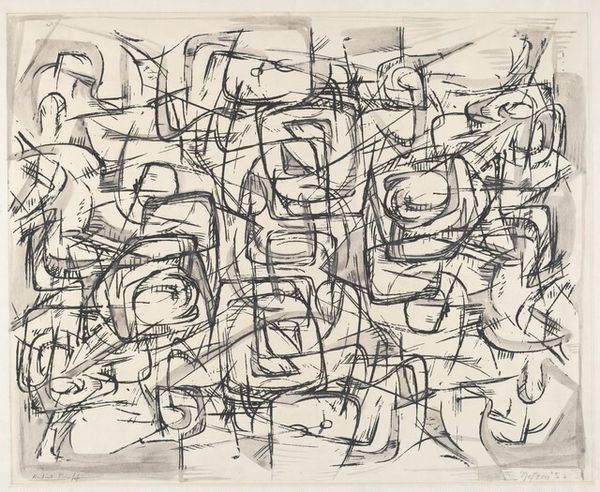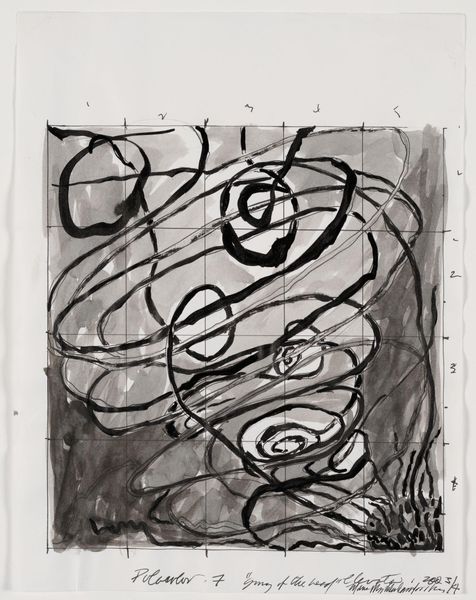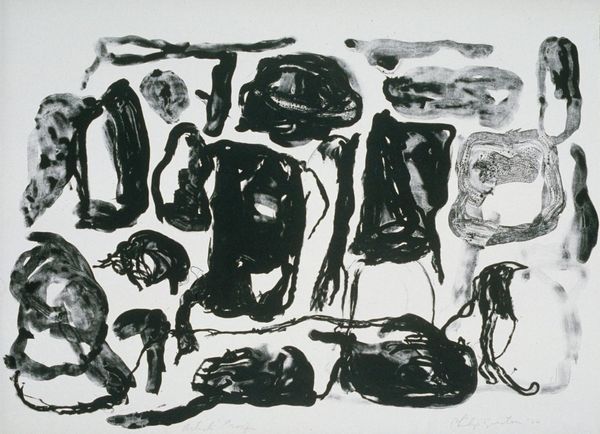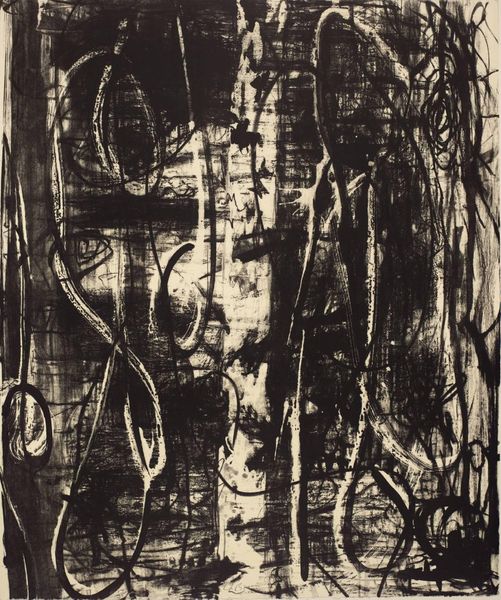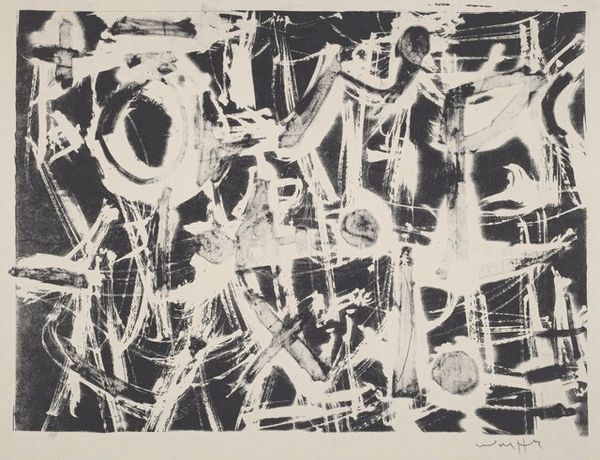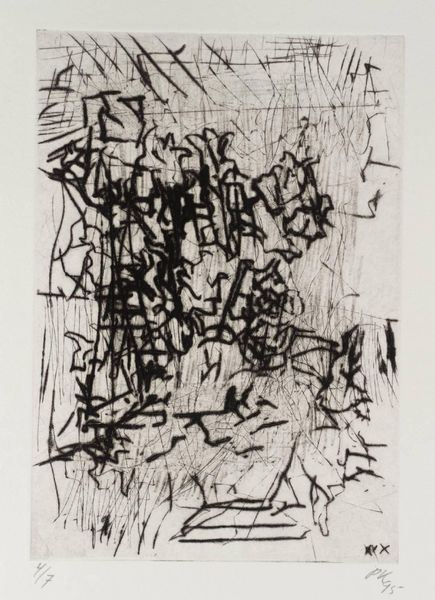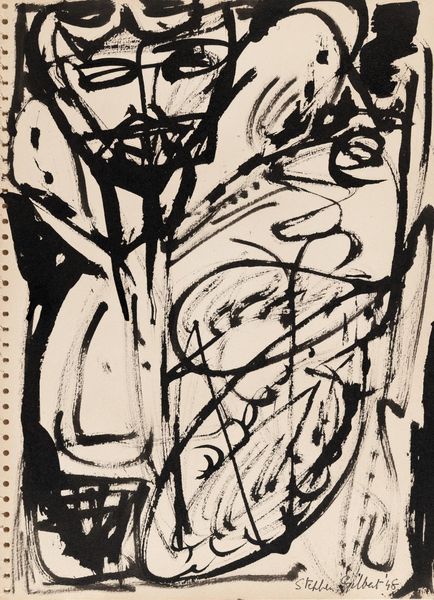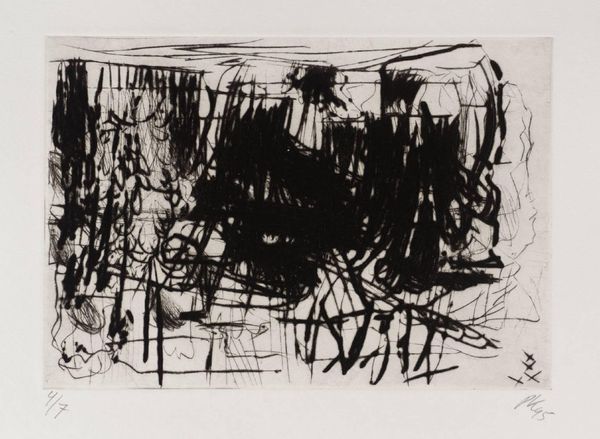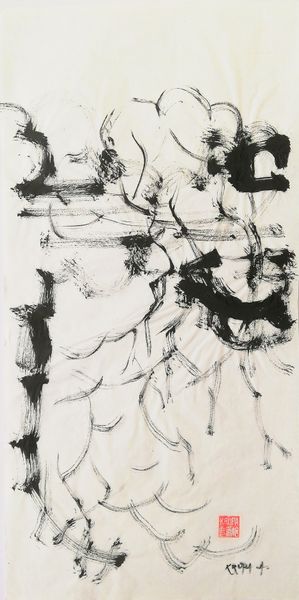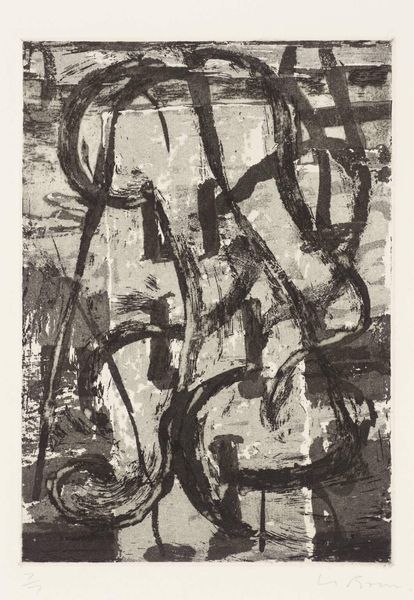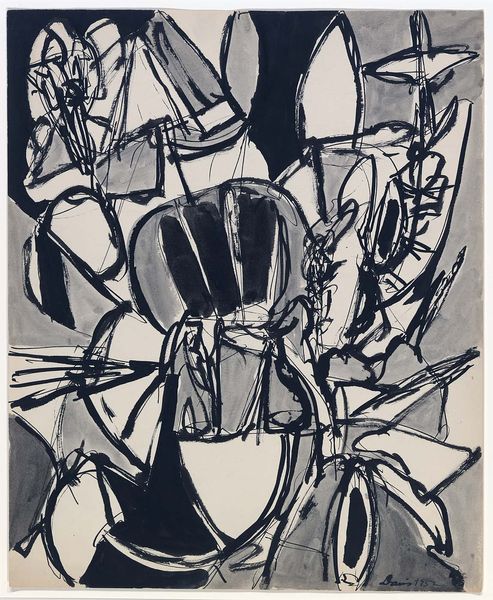
drawing, print, ink
#
abstract-expressionism
#
drawing
# print
#
ink
#
abstraction
#
line
#
monochrome
Dimensions: Image: 422 x 570 mm Sheet: 528 x 645 mm
Copyright: National Gallery of Art: CC0 1.0
Curator: What a whirlwind of marks. It's almost dizzying at first glance. Editor: It certainly grabs your attention. This is "Refractions" created by Lee Krasner in 1962. She employed ink in this drawing and print, resulting in a monochromatic flurry. Curator: That title, "Refractions," resonates. I see fragmented glimpses, reflections of something, maybe experiences or emotions broken down and rearranged. It reminds me of shattered mirrors, and the distorted way we can perceive ourselves after trauma. Editor: Krasner's work often reflected her own complex life. Consider the historical backdrop—the early 1960s were a period of great social upheaval, and this intense abstraction might reflect that anxiety. This piece emerges just six years after the passing of Jackson Pollock. It would not be out of order to ask to what degree his passing informed the emotion and visual language within Krasner's artworks from that moment onwards. Curator: The composition definitely communicates that. The dense network of lines, both chaotic and deliberate, evoke feelings of tension, a struggle for clarity within that chaos. Circles morph into something else each time my eye tries to settle on the form. And it seems to vibrate on the surface, too. Editor: Abstract Expressionism aimed to tap into primal emotions. Think about the institutions exhibiting such raw artwork, the collectors who championed it, and how this piece both fits and pushes those boundaries in the 1960s art world. Was the intensity, that vibrating emotion, a kind of resistance? Curator: Perhaps it’s resistance to the societal norms that suppressed female artists at the time. This dense tapestry of imagery—there's a strength and assertion that's undeniable. The limited monochrome palette brings focus to line and form; Krasner makes a conscious effort to strip things back and rebuild, re-create a vision or perception through that careful mark-making. It does offer the viewer a certain level of trust, however. The lack of color invites us to discover what is hidden behind the lines. Editor: Right, and monochrome can be powerful precisely because of its starkness. In its public life now, this piece adds to Krasner's legacy as an innovator within Abstract Expressionism, but also it makes a bold declaration about female experiences within broader artistic contexts. Curator: Reflecting on its emotional intensity, I am more aware that sometimes visual abstraction speaks louder than any figurative depiction could. Editor: And by situating Krasner and "Refractions" within the artistic and political dialogues of the time, perhaps we are better prepared to meet its complexity.
Comments
No comments
Be the first to comment and join the conversation on the ultimate creative platform.
